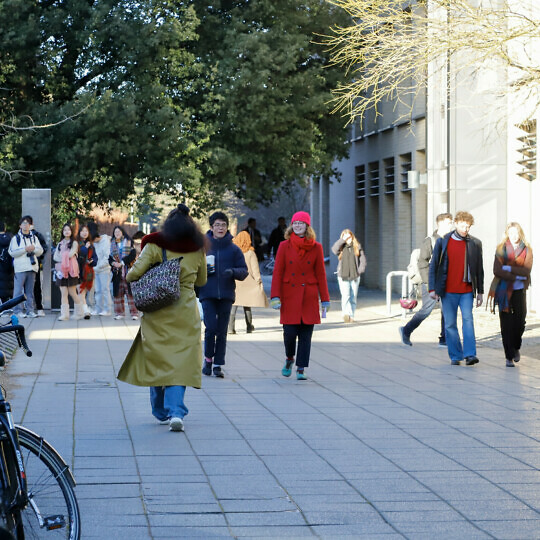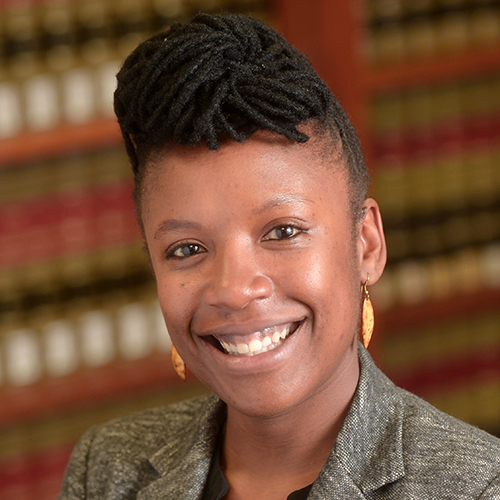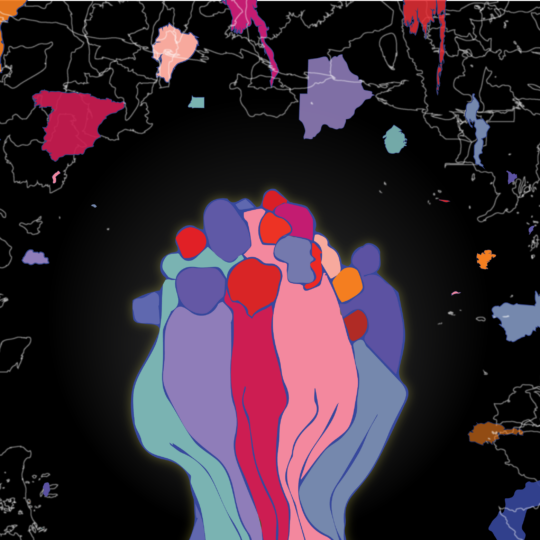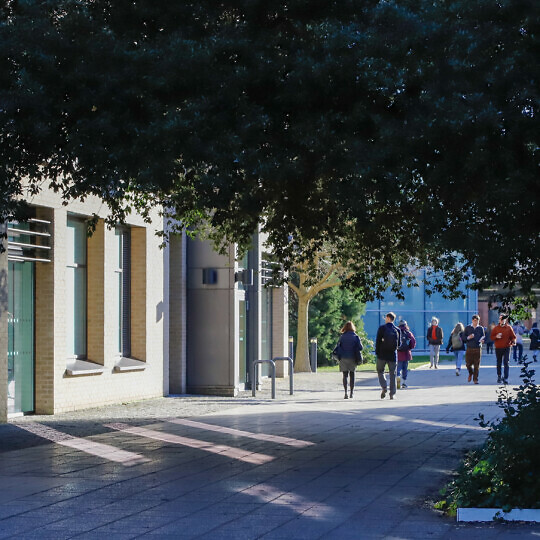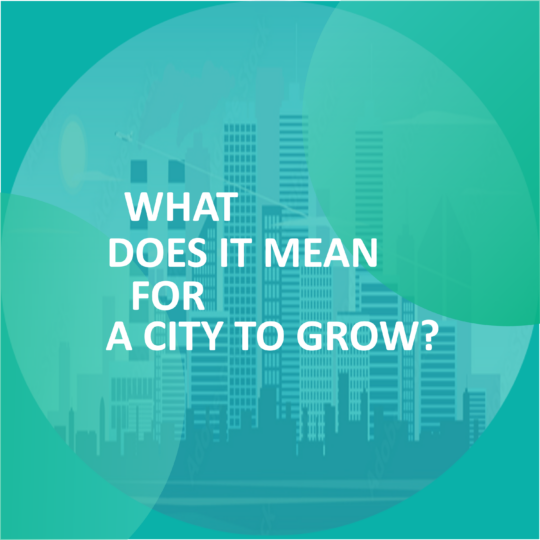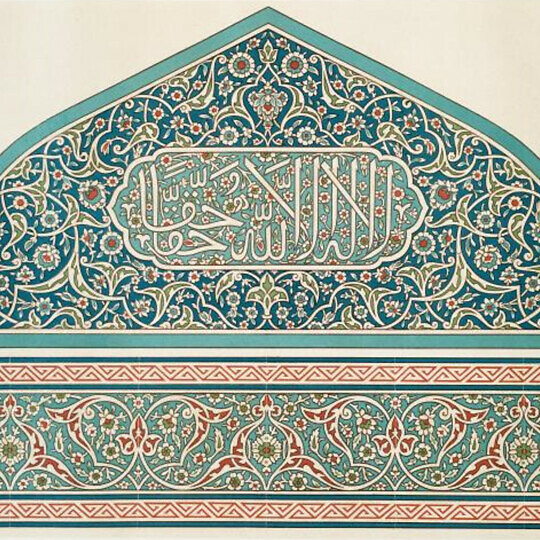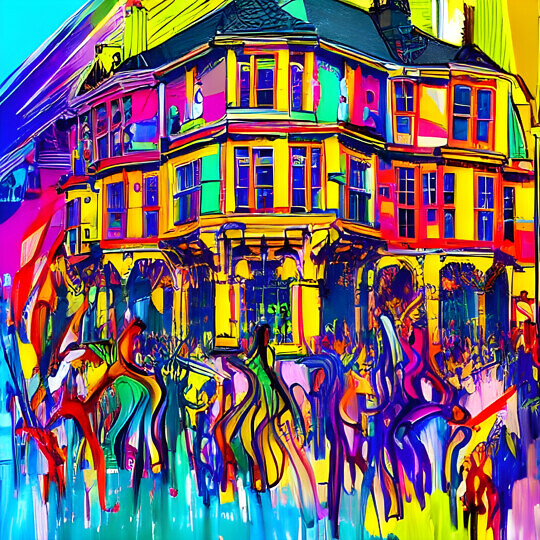| 6 Feb 2015 - 7 Feb 2015 | All day | CRASSH, Alison Richard Building, 7 West Road, CB3 9DT - SG1&2 | |
- Description
- Programme
- Abstracts
Description
Register online via the link at the top right hand side of this page
Conference fee: £50 (full), £25 (students) – includes lunch, tea/coffee
Conference dinner at Jesus College: £47
Deadline: Friday 30 January 2015
Convener
Sandra Brunnegger (St Edmund's College, University of Cambridge)
Summary
Just as the effects of the law do not belong to any specific institutional space or domain, but manifest themselves in everyday life, so too does justice permeate the everyday (e.g., Merry 1990; Greenhouse, Yngvesson, & Engel 1994; Ewick & Silbey 1998; Sarat & Kearns 2009). Justice is woven into the fabric of everyday existence at different levels and in manifold ways. People understand, perceive, receive, experience and accomplish justice in many forms, either by themselves or through the mediation of other actors. Justice is plural in its meanings and expressions, while regimes of justice range in scale from family arbitration and indigenous forms of justice, to the International Criminal Court. It therefore seems inevitable that justice will remain both a familiar ideal or norm, and a difficult concept to specify.
This conference aims to generate a cumulative account of the 'everyday nature of justice'. We invite theoretically grounded papers offering ethnographic insights into the plural nature of 'everyday justice' across the globe. By bringing together scholars whose work teases out the multiple locations and layers of 'everyday justices', our goal is to spotlight the process of everyday justice formation in all its ambiguity, complexity and plurality. In soliciting work at the junction of 'justice' and the 'everyday', we intend to provoke a reconceptualization of justice across multiple settings, one that brings a wider and more plural range of scholarship to bear on currently intractable social conflicts.
The conference is part of a larger research project on everyday conceptions of justice funded by the Austrian Academy of Sciences (2012-present).
Sponsors



Supported by the Centre for Research in the Arts, Humanities and Social Sciences (CRASSH) and the Division of Social Anthropology at the University of Cambridge, and the Austrian Academy of Sciences.
Accommodation for speakers selected through the call for papers and non-paper giving delegates
We are unable to arrange or book accommodation, however, the following websites may be of help.
Visit Cambridge
Cambridge Rooms
University of Cambridge accommodation webpage
Administrative assistance: events@crassh.cam.ac.uk
Programme
| DAY 1 - Friday 6th February | |
| 8.30-9.00 | Registration |
| 9.00-9.50 | PLENARY SESSION Welcome by Sandra Brunnegger (University of Cambridge)
Chair: Karen Faulk (Carnegie Mellon University) |
| 9.50-11.00 | PANEL 1
Discussant: Sari Wastell (Goldsmiths, University of London) Chair: Karen Faulk (Carnegie Mellon University) |
| 11.00-11.30 | Coffee break |
| 11.30-12.40 | PANEL 2
Discussant: Lars Waldorf (University of York) Chair: Susanne Brandtstädter (University of Oslo) |
| 12.40-13.40 | Lunch |
| 13.40-14.50 | PANEL 3
Discussant: Marta Magalhães Wallace (University of Cambridge) Chair: Sari Wastell (Goldsmiths, University of London) |
| 14.50-16.00 | PANEL 4
Discussant: Sian Lazar (University of Cambridge) Chair: Sandra Brunnegger (University of Cambridge) |
| 16.00-16.20 | Coffee break |
| 16.20-17.40 | PANEL 5
Discussant: Leigh Payne (University of Oxford) Chair: Alex Jeffrey (University of Cambridge) |
| 19.30 | Conference Dinner at Jesus College (Upper Hall) |
| DAY 2 - Saturday 7 February | |
| 9.30-10.40 | PANEL 6
Discussant: Alex Jeffrey (University of Cambridge) Chair: Kathleen Sullivan (California State University, Los Angeles) |
| 10.40-11.10 | Coffee break |
| 11.10-12.50 | INVITED PANEL
Discussant: Tim Allen (London School of Economics) Chair: Kathleen Sullivan (California State University, Los Angeles) |
| 12.50-13.40 | Lunch |
| 13.40-14.50 | PANEL 7
Discussant: Perveez Mody (University of Cambridge) Chair: Marta Magalhães Wallace (University of Cambridge) |
| 14.50-15.20 | Coffee break |
| 15.20-16.50 | PANEL 8
Discussant: Karen Faulk (Carnegie Mellon University) Chair: Graham Denyer Willis (University of Cambridge) |
| 16.50 | Closing remarks by Tim Allen (London School of Economics) |
Abstracts
Justice Claims in the Everyday: Indignation and Outreach in the Era of Humanity – Ronald Niezen (McGill University)
Justice claims are not limited to the formal venues of law or even the public accountability processes of journalism; they are also expressed in everyday activities of public outreach, in informal efforts toward mass communication, whether in street art, graffiti, or Internet communication. This non-professional realm of justice claims tells us something about the extent to which justice is experienced and expressed outside the law; but at the same time through the influence of law. Human rights in particular can be seen as a source of inspiration and expression of new and emerging forms of rights-consciousness and the public expression of grievance, which I encountered in ethnographic research settings as diverse and distant from each other as northern Mali and northern Canada. This consciousness, in turn, relates to the popular dynamics of human rights lobbying and awareness of humanity, grounded as they are in the “soft” processes of diplomacy and persuasion.
Violence and the administration of everyday justice in Malawi’s magistrates’ courts – Jessica Johnson, University of Cambridge
Despite the heavy focus on gender-based violence within media and policy circles in Malawi, and the broad sensitisation campaigns that have left few persons and places untouched, violence (commonly translated as nkhanza) plays a minimal role in the narratives produced during marital disputes heard by local traditional authorities, police officers and magistrates. I make this claim on the basis of twenty months fieldwork carried out in rural southern Malawi, 2009-10. Regardless of whether cases were heard in a setting whose raison d’être was to address domestic violence, violence tended to be approached as just one aspect of multifaceted disputes, which did not demand separate treatment. This suggests, I argue, that the priorities and everyday understandings of those seeking justice, as well as those striving to administer it, were not entirely aligned with the concerns of gender and women’s rights activists who have placed combating gender violence at the centre of their agenda. In this paper, I examine the ways in which marital disputes progressed through local magistrates’ courts, which are easily accessible to the rural poor, asking what, if not violence, was prioritised, and how outcomes were shaped. In particular, I highlight the discursive framing of claims, and the prominence given to evidence of adherence to customary procedures during the course of a dispute, both within and without the courts. I thus develop an ethnographic sense of the ways in which descriptions of violence are incorporated into broader narrative accounts, alongside seemingly mundane recollections of such matters as picking and cooking pumpkins. Far from irrelevant, the latter can provide meaningful testimony as to the moral-material contours of marital relationships and may well inform a magistrate’s judgement. Pertinent here is the fact that nkhanza is a wide-ranging vernacular term that makes a mockery of distinctions between ‘violence’ and the material dimensions of marital life. ‘Cruelty’, as nkhanza is more accurately translated back into English, allows more readily than ‘violence’ for a broad focus on the texture of relationships; it also recognises the potential severity of infractions that leave the skin untouched. Thus we see the influence within the courts of everyday understandings of violence that take very little from internationally dominant models. In this regard, magistrates, share a great deal with those whose disputes they endeavour to resolve and I argue that their interventions are, for the most part, inflected by a shared understanding that the fulfilment of mutual obligations lies at the heart of a ‘just marriage’ (banja la chilungamo).
Everyday Justice at the Courthouse? Encounters, Knowledge and Authority in Argentina's Mixed Tribunal – Santiago Abel Amietta, University of Manchester
Research on law and the everyday has thus far sidestepped the study of juries and other forms of lay participation in official judicial procedures as locales for inquiry. Among other reasons (including methodological obstacles due to statutory limitations to approach jurors for in depth interviewing) this is related to a naturalization of the jury as a constitutive part, if not an epitome, of the formal legal system. The negative constitution of the everyday against the law situates the jurors at the other extreme of the continuum, essentially delinked from spaces of the everyday while they serve at the courthouse. Socio-legal jury research, in its turn, has remained attached to legal formalistic conceptions of law and justice which shaped its agenda in line with lawyers' and policy makers' desire to understand how juries decide, resulting in a similar disregard for the 'everyday' dimension of jurors' experiences.
This paper intends to bridge these gaps from the empirical vantage point of a recently introduced system of lay participation in criminal trials in Argentina, the first one in the country's history of professional-only judicial adjudication. Despite the National Constitution containing provisions for jury trials since 1853, Córdoba was the first province to introduce lay decision makers, as the result of a process that began with a provincial constitutional reform in 1986 and whose most recent landmark was the 2005 establishment of a mixed tribunal (three judges and eight jurors) to judge the most serious murders and cases of public corruption. Stakeholders across the political spectrum put forward the mixed tribunal as a new way of making justice, one imbued with the experiences and sentiments of ordinary people.
My analysis follows into the courthouse the dynamics of the incorporation of ordinary citizens to the socio-legal assemblage of state criminal justice. The relation of legal knowledge claims to the 'everyday commonsense' attached to the idea of the juror; the intertwinement of formal and informal practices within legal procedures and the way information on them circulates; the responses of judicial officials and solicitors to the incorporation of laypersons; their understandings of judicial authority, its sources and spatiotemporal boundaries; and jurors' own experiences of law and justice all provide rich venues for examining different conceptions of justice and the boundaries we draw between their non-institutional and institutional forms.
The discussion draws on fieldwork data produced between 2012 and 2013 in Argentina, including observation of trial hearings and other courthouse proceedings and routines, interviews with jurors, lawyers, judicial officials, legal reformers and pro-jury activists, and documentary sources including judicial decisions, case files, judiciary’s bylaws, instruction leaflets for jurors, websites contents and media articles.
“Blood from a Stone: Accounts of Justice in Child Support Enforcement Proceedings” – Tonya L. Brito, University of Wisconsin
This multidisciplinary study seeks to enhance understanding of access to justice for low-income litigants in civil court proceedings. We employ qualitative analysis to examine how different legal assistance models shape legal access in the context of child support enforcement proceedings, specifically civil contempt hearings. The study draws on multiple sources of data across the two models of legal assistance: focus groups with legal professionals who handle child support cases (including judges, family court commissioners, state child support attorneys, and defense attorneys); ethnographic observation of child support enforcement proceedings; corresponding court transcripts and case records; and interviews with child support obligors (defendants). More specifically, in two of our field sites, we are conducting a focused ethnography of child support enforcement cases at a county courthouse. Each research site comprises a busy child support docket in an economically depressed community. The child support obligors in these cares are predominately low-income noncustodial fathers, racially diverse, and include a critical mass of historically marginalized groups. Typically, they lack counsel.
Child support enforcement actions offer an interesting and complex setting for exploring issues of justice. Although child support is meant to secure financial support for children, many fathers who are under a legal obligation to pay support are poor. Studies show that about twenty-three percent of noncustodial fathers are indeed “unable nonpayers.” Fathers who are unable to pay support often accumulate significant child support debt. Indeed, 80% of the unpaid child support debt in the United States is owed by parents who earn less than $10,000 annually. These parents lack the means to pay their child support debt, yet they experience the full panoply of enforcement measures, including civil incarceration for nonpayment of support. The legal proceedings brought against low-income noncustodial parents are often cyclical; obligors experience multiple enforcement hearings for the same child support debt. The state’s unrelenting pursuit of child support debt from noncustodial fathers living in deep poverty seems not only futile but also economically irrational. The cumulative costs to the state of enforcing support, providing a judicial forum for these actions, and incarcerating fathers who fail to comply with support orders far exceeds the child support that is produced as a result of these efforts.
This paper examines how the judges and lawyers involved in child support enforcement cases understand, perceive, and experience justice in this setting. From their accounts, we have identified several schemas or “narratives of legality” that explain and justify the legal actions they take and the underlying values they express. The paper further examines the schema both individually and in relation to each other.
A place for justice in mediation? – Debbie De Girolamo, Queen Mary, University of London
As a framework comprised of rules, processes and structures, mediation provides an excellent intersection between the legal and the social: “mediation is outside the law as a social process, and at the same time, it is within the law through the influences of legal structures, rules and norms” (De Girolamo 2012). References to rules and the litigation process occur throughout the social exchange between the disputants, which impact their actions and decisions. The social interaction compelling parties towards negotiated order is achieved through the use of legal rules, norms and structures. Mediation is therefore an appropriate framework within which to explore justice, both at an institutional and ‘everyday’ level of interaction. The exploration in this paper will consider how justice makes itself known within the mediation process based on actual experience in observed commercial mediations. An ethnographic study of commercial mediation was conducted by the author during a 12 month period of fieldwork in London, England. Participant‐observation, interview data and document review of 38 cases form part of the ethnographic data exploring mediation as a social process informed by structures, rules and norms. Through a consideration of this ethnographic data, concepts of justice in a private dispute resolution process will be analysed; in particular, whether justice is a concept that is considered by parties within this social interaction, and if so, what form justice takes.
Justice by Riot: Law, Power, and Violence in a Guatemalan Prison – Anthony W Fontes, University of California, Berkeley
Prisons are the concrete manifestation of society’s effort to isolate deviant and dangerous bodies. Prisons form the physical infrastructure of official, state-mandated “justice”—linking legal parsing of right and wrong with the sovereign right to punish. By identifying, detaining, and punishing criminal subjects, the state reifies itself—performing the role of societal caretaker by quarantining criminals to protect the social body from the contagion of crime. Prison walls in fact undergird the foundations of liberal society by performing a useful illusion: the good can be divided from the evil, and punishing evil will protect the good. These constructs of concrete and barbed wire are materializations of the moral panics that create folk devils (Cohen 1972) and the talk of crime that (re)produces the category of the criminal (Caldeira 2000).
Around the world, the role of prisons as instruments of justice, however, has come under increasing scrutiny as their failure to quell rising crime and insecurity, or serve as anything more than “warehouses” for criminals, becomes more and more obvious. Nowhere is this clearer than in Latin America. Indeed, across the region, prisons have come to represent “a hole at the center of the state,” as imprisoned gang members and other organized criminal groups use them as staging grounds to project their influence and authority beyond prison walls (Lessing 2013). Left largely invisible to the outside world and with few remedies for the weak against the strong, once inside prisoners must form their own systems of law and order and determine what is just and what is not to manage everyday existence.
So, in this paper I ask: How do incarcerated criminals—as individuals and as a social body—determine what justice means and how injustice should be perceived? By what mechanisms—democratically elected decision-making bodies, codes of conduct, violent eruption, and so on—is justice meted out inside the space of the prison? To map out the meaning and mechanisms of justice behind bars, I draw on three years of ethnographic fieldwork inside Guatemalan prisons with transnational gang members, war criminals, narco-traffickers, and prison staff. I examine the rise and fall of prison strongmen, the use of riots as a form of social struggle, and individual prisoner’s efforts to make sense of both their incarceration and how to navigate the dangers and inequities of prison life. As a “gray zone” in which inmates are too often forced to jockey for survival at one another’s expense, “justice” inside the prison is inherently ambiguous. I will explore inmates’ everyday struggles to face and overcome this treacherous uncertainty, and illuminate how the penal institution, meant to uphold justice in the name of the state and society, becomes a site of constant struggle in which both the meaning and utility of the concept fall into grave doubt.
“We are drug lords, not thieves nor kidnappers”: The Concept of Justice in the Knights Templar Organized Criminal Group in Mexico – Kari Moe Jacobsen , Tecnológico de Monterrey
Organized criminal groups are not usually perceived as promoters or agents of justice. Media accounts of the activities of organized criminal groups usually focus on the illegal nature of their operations, and their potential and actual violence against rival groups and the population where they operate. Mexico is no exception in this regard. The media accounts, and thus people’s perception of Mexico in recent years range from classifying Mexico as a failed state to graphic descriptions of beheaded bodies of innocent people. The violence seems pointless and unnecessary, since the organized criminal groups behind them rarely express any political ideology or political intentions. However, many of the groups and individuals operating within them have explicit ethical foundations for their choices and actions. As the ability and willingness of the Mexican state to carry out justice is increasingly questioned and the continuing War on Drugs does not seem to end the violence and injustice in the country, people are looking elsewhere for justice. In Mexico today, organized criminal groups represent some of the few opportunities for socioeconomic advancement and some of the fiercest critics of the Mexican state. Organized criminal groups institute a level of justice that is often sophisticated, based on their society’s understanding of justice, and has profound impact on the regions where they operate.
This is particularly clear in the case of the organized criminal group Knights Templar, which operates in the western state of Michoacán in Mexico. The group is led by the former school teacher Servando Gómez, better known as “La Tuta”. “La Tuta” imposes his own idea of justice on Michoacán. A common-sense, Robin Hood- style of taking from the rich through “taxation” and creating a more equal distribution of land and income in a highly unequal region. The official authorities admit defeat, and even ask for the Knights Templar’s help in solving issues of implementation of the law. “La Tuta” is often called “the real governor of Michoacán”, but this name does not cover his whole persona and importance; “La Tuta” is the Mexican state’s fiercest critic at the moment, and provides one of the clearest alternatives to implement a sense of justice in his region.
This paper aims to explore one of the constitutions of everyday justice in the intersection and blurring of the boundaries between the institutional and the non-institutional, where the non-institutional has become more powerful than the institutional, but is still hotly contested by other civil society actors.
Hot Property: The transformative effects of 'everyday justice' in Maori and Colonial contestations of New Zealand's Hot Springs – Elizabeth Cory-Pearce, University of Cambridge
The volcanic region of Rotorua in New Zealand became popular as a place of spa tourism from the mid 19th century. As hot springs became 'hot property', to derive income from them Maori fought amongst themselves and with various colonialist interest groups to claim the springs as their own. The land in question belonged to a complex mosaic of distinct yet interrelated hapu (Maori descent groups), each charging a toll to provide tourists with access to hot springs and volcanic sights. Tour providers – including the globally ambitious Thomas Cook – placed mounting pressure on the colonial government to abolish what they called “obnoxious tolls” (i.e. multiple hapu charging multiple fees) with one standardised fee. When a newly established Government 'Department for Tourist and Health Resorts' acquired a prime area of volcanic activity, setting it aside as freely accessible to the nation, it effectively framed a pre-existing Maori economic system as extortionate and grossly unjust. In the Maori system, hapu claim rights to land and resources through a combination of whakapapa (ancestry) and ahi kai (residence). Ahi kai was demonstrated through practices such as dwelling, house-building, cultivation, and contribution to collective economic projects and ceremonial obligations. Since the onset of tourism, charging tourists access fees to sites, and service fees for things like housing, transport, baths and food, became part of hapu economies and evidence of ahi kai. For Maori, just participation in tourist work required a genealogical component and its activation by an everyday lived component of ahi kai. However, the new Department for Tourist and Health Resorts required only that Maori be popular with tourists. The clash of notions of 'just employment' that ensued forms the core study of this paper. By unravelling how some Maori managed to successfully articulate both systems, I propose a different understanding of 'globalisation processes'; one that does not presume a 'local' that is always and necessarily accommodating a spreading 'global'.
Troubled Currents: Contentious Moral Orderings of Justice in Drakes Estero – Kathleen Sullivan, California State University, Los Angeles
Drakes Bay Oyster Company was created about 80 years ago in what is now Point Reyes National Seashore (instantiated in 1962), in western Marin County, California. Marin County is dominated by public natural parks and smaller-scale agriculture, and is situated in a region that includes Berkeley, San Francisco, a robust wine industry, and much cultural support for locally produced food. By the 2000s, Drakes Bay Oyster Company’s approximately 35 employees produced the majority of California grown oysters available in regional markets. In 2012, the federal lease upon which the oyster company’s production was situated came up for renewal and the federal government refused to renew, in spite of extensive local rural and regional urban support for the oyster company. Drakes Bay Oyster Company’s federal leases have since served as a catalyst for environmental groups, scientists, politicians, reporters, company owners and workers, local and regional restaurants, and the Superior Court to engage in contentious legal and media battles over the meanings and practice of justice.
I propose to unpack the constellation of notions of justice manifested in both the mediated public sphere and the courtrooms in the contentious reconfiguration of Drakes Estero, paying particular attention to the various moral arguments that have shaped the battles over jobs, ways of life, environmental conditions, and justice. This case suggests that a number of normative shifts are underway, with quotidian material consequences for local residents, company owners, their workers, other local businesses dependent on the oyster company’s production, and the National Seashore rangers and managers. Some of the normative shifts include those related to the uses to which public waters and lands can be put, truncated local control of locally situated resources, and a federal shift away from supporting some forms of economic development. Every twist and turn has revealed justice’s imbrication with contemporary relations of power, pointing, as Laura Nader (2010, pages 316-331, Epilogue in Mirrors of Justice: Law and Power in the Post-Cold War Era) suggests, to the importance of starting with the shaping role played by hegemonic systems of social control. Justice, in this case, is best understood through an examination of the actual concrete “political, moral, and ideological imperatives that the diverse invocations of justice reflect” (Goodale and Clarke 2010, page 12, Introduction in Mirrors of Justice: Law and Power in the Post-Cold War Era), paying particular attention to the way in which justice operates as an ideal, a rationale, and a constellation of social practices (Goodale and Clarke 2010, pages 1-27, Introduction in Mirrors of Justice: Law and Power in the Post-Cold War Era) in the context of the framing discourses of environment, small-scale economic production, and public good. I will use this case to reflect upon Goodale and Clarke’s (2010, pages 1-27, Introduction in Mirrors of Justice: Law and Power in the Post-Cold War Era) provocative ideas about the relationship between universalizing discursive regimes, in this case environmentalism (in theirs, human rights), and justice, a signifier open to reinvestments of meaning.
‘Customary justice’ as the ritualization of the everyday: A view from post-war Peruvian Amazonia – Juan Pablo Sarmiento Barletti, Durham University
Indigenous Amazonian societies are famed for their lack of modes for conflict resolution. How, then, do these egalitarian peoples deal with the aftermath of intragroup war? This paper is an exploration of the introduction by Ashaninka people, the largest indigenous Amazonian group, of sanciones (sanctions), justice practices that have been deployed to deal with the anti-convivial behaviour that they explain is a consequence of their participation in the Peruvian internal war (1980-2000).
Sanciones, from afar, look like highly violent, regulated, and ritualised practices that are out of place amongst egalitarian people. This is specially so because Ashaninka people adapted sanciones from the public and physical punishments they experienced from the Army during war. Yet, these practices respond to Ashaninka social life by mirroring the everyday practices aimed at the creation of Ashaninkasanori (‘real humans’) through kametsa asaiki (‘living well’, their ethos of well-being). Sanciones aim at the creation of Ashaninkasanori out of anti-convivial beings, as they are based on the concept that those who behave anti-convivially only do so because they are unable to control their negative emotions (anger, sadness, jealousy) after having lost their humanity during war.
Ashaninka justice deals with the morals, virtues and passions that are central to humanity and to its making. Sanciones are now part of the everyday creation of people, advising those being sanctioned as well as their audience about the positive emotions (happiness, love, shame) that are key to kametsa asaiki and to being an Ashaninkasanori. Whilst sanciones are immediately preoccupied with the rehumanisation of anti-convivial subjects through their emotional empowerment, they are also public declarations of egalitarianism and of a shared convivial project.
Yet, even if sanciones were taken from an arm of the state, and are backed by law (as customary law), my informants do not refer to any of these as a source for their legitimacy. Instead, their legitimacy comes from their village’s charter, highlighting that sanciones are set by the village they are all part of, rather than by the authorities that run them, or the individuals that request for someone to be sanctioned. Then, this case-study case shows more than a transformation of tradition: it deals with indigenous people rearticulating their relations with the state and amongst themselves after an intense process of violence that has been followed by a present of intense extraction, threatening laws, and discrimination. Sanciones are part of a ‘place’ and ‘people’-making project that reflects Ashaninka ideas of well-being, showing that judiciary actions are not just about norm and contract, but reflect the virtues and the passions that people understand as central to humanity. As such, rather than looking for norms/institutions matching Euro-American concepts of law or the perseverance of ‘tradition’ in ‘customary law’, I explore the context in which certain judiciary practices are created, the social and political preoccupations that they address, and how they are conceptualized and put into practice.
Mediation and the Medium: Reflections on Radio Justice – Harri Englund, University of Cambridge
The study of justice in its everyday instantiations promises to multiply the domains for empirical inquiry. Multiplicity does not preclude a set of common themes around which the studies may converge. ‘Mediation’ is one such theme, suspended as it is between formal legal rules and the social processes by which adversarial litigation is bypassed. I attempt in this paper to open up the interest in mediation further by drawing on findings from the study of mass media. My reason for doing so is driven by my ethnographic research at a provincial radio station in Zambia. Its popular radio personalities, particularly a certain grandfather figure, engage with their listeners’ grievances by seeking justice on their behalf. Not only does the radio present yet another domain for the study of everyday justice, it also draws our attention to aspects of mediation that may not have been readily recognised in those studies that have approached mediation as a negotiated process of dispute resolution. A charismatic radio personality who confronts injustices inspires fresh questions to be asked about voice, authority and hierarchy in mediation. He also enables us to discuss the extent to which mediators are not intermediaries but transform the meanings that participants attribute to their disputes. This discussion raises the possibility of investigating how different media conceal or reveal their status as mediators and whether an ideology of immediacy informs their work.
Making justice or making it right? Property and transitional justice in post-war Kosovo – Agathe C. Mora, University of Edinburgh/ Max Planck Institute for Social Anthropology
How is justice understood and acted out by legal practitioners in a context of international intervention and post-conflict transition? The Kosovo Property Agency (KPA) is the quasi-judicial institution put in place by the United Nations Interim Administration Mission in Kosovo (UNMIK) to ‘resolve’ war-related property claims and thereby restitute property rights to, for a great majority of claims, Kosovo Serbian ‘internally displaced persons’ (IDPs). For the lawyers and judges involved in the property restitution process of the KPA, their work is not ‘just about’ property restitution. Because they adhere to and reproduce a dominant ideology of international human rights standards, their work serves the higher purpose of ‘righting wrongs’ done to war victims (which are narrowly defined as such as the legal beneficiaries of the restitution process). This ideal of justice is pursued and implemented in the context of a transitional rule of law framework imposed by international actors and with the stated aim of building independent Kosovo as EU-compatible, multi-ethnic state that respects minority rights. In practice, however, lawyers and judges are confronted daily with the fact that at the end of the adjudication process only very few claimants are in a position to enjoy their property rights beyond the mere – although often symbolically very important – legal recognition of these rights. Based on 14 months of ethnographic fieldwork within the KPA, at the Supreme Court of Kosovo and with claimants and respondents to the KPA process in Kosovo and Serbia, this paper argues that rather than investigating the existing but relatively evident disconnect between claimants’ and institutional notions of justice, it is analytically more fruitful to explore the inherent tensions between the ideals of justice as embedded in the international human rights discourse and the ‘quick-fix’ pragmatics of international intervention and ‘transitional justice’ that is revealed in the daily work of legal practitioners themselves.
Is justice over-rated? – Fernanda Pirie, University of Oxford
The concept of victims’ rights to justice is surely compelling. It is one of the central ideas promoted by those who campaign for ‘transitional justice’, as an appropriate way to respond to atrocities and to achieve peace and stability. The idea of victims’ rights to justice has also entered the mainstream of the UK’s criminal justice system, which now provides for victims’ statement to be heard and considered by judges responsible for sentencing and parole. These ideas encourage victims to expect reparations and demand that their rights be recognized.
The obstacles to achieving such justice forms of justice are readily recognized, not least by advocates of transitional justice, themselves, and members of the UK judiciary, but in this presentation I go further and question the very idea of ‘victims’ justice’: is it fundamental and can it be thought to represent a universal human value? Starting with Aristotle’s distinction between ‘corrective’ and ‘distributive’ justice and drawing on contrasting case studies from Tibet, I suggest that the idea that basic notions of fairness require perpetrators to be held accountable is culturally constructed. Moreover, to claim that justice is fundamental to peace is to equate two social ideals that are frequently, in the real world, at odds. It is to set up an unrealistic, idealistic vision of a perfect world, based upon a mistaken assumption about the universal nature of corrective justice.
Justice Pluralism in Everyday Lives of Women in India – Karine Bates, Université de Montréal
To better understand how Indian women elaborate meanings of justice, we must take into account a series of (explicit and implicit) dialogues among diverse groups of actors who represent various conception of justice. These exchanges are mutually interconnected at a fundamental level, and it is only by juxtaposing them that we can clarify the ways in which kinship and social networks influence how individuals relate to everyday experiences of justice. It is this polyvocality that makes it possible to analyze a wide range of justice models and to attempt to grasp the various ways in which justice is understood by women. My main research interests are access to justice and interactions between different forms of conflict resolution in India, and it is against the backdrop of those themes that this paper presents my preliminary thoughts on how data collected through the perspective of legal anthropology can inform research on how women, especially Hindu women, explain what justice is. In order to understand how Indian women cope with various parameters of justice, it is necessary to investigate key elements of their daily lives, including household dynamics, kinship systems, marriage rules, economic resources, inheritance patterns, gender socialization, caste organization and concepts of rights and duties. It is essential to recognize that, first, there are variables influencing how a person will internalize conceptions of justice in a pluralistic legal environment. For example, recognition of the legitimacy and application of state rights depends on how women experience the conflicts that result from the state legislation’s incongruity with certain cultural values and social practices that have been observed for decades. Thus, legal principles termed “universal”, such as equality, may be reinterpreted according to culturally defined ideals of what constitutes a just society. For the great majority of women, their duties as daughters, wives, and widows take precedence over the modern ideal that raises the status of the individual above that of the group. What is more, the ideals of justice for women, proclaimed in official state discourse, do not manifest themselves in the state mechanisms of conflict resolution to which women have access (many men, in fact, are also unempowered). In cases of matrimonial conflict, problems of access to justice caused by an expensive, dense, and often corrupt bureaucracy encourage the preservation of alternate means of conflict resolution, in which religious practices (e.g. fasts, pilgrimages, possession rituals), informal transactions among brothers, and political alliances all intermingle. Thus, studying the interplay between individuals’ internal discourses on justice and the prevailing community’s narratives on law, justice and order is likely to tell us much about individuals’ motivation and capacity to actualize their own views of justice. The analysis of multidimensional polyvocality contributes to the study of various models of justice and the dynamics of legal subjectivization. Karine Bates
Towards Intimate Justice? Everyday Politics of Domestic Violence Law and Legal Pluralism in Cambodia – Katherine Brickell, Royal Holloway, University of London
In September 2005 the Cambodian National Assembly ratified the ‘Law on the Prevention of Domestic Violence and the Protection of the Victims’. Based on two years of fieldwork (2012-2014) funded by the ESRC/Department for International Development (DFID), I explore the hiatus that has emerged between promises enshrined in legal reform and progress realised on the ground. Through a mixed quantitative/qualitative approach, I trace the everyday politics of domestic violence law from the perspective of victims, legal professionals, NGO workers, police officers and other authority leaders who operate under a pluri-legal system of state-sanctioned and customary law. Insights are provided on how domestic violence law has been variously embraced and rejected in the homes, commune councils, and government offices that contribute to its success or failure to meet its objective, to: ‘prevent domestic violence, protect the victims and strengthen the culture of non-violence and harmony within the households in society in the Kingdom of Cambodia’. In turn, the paper deals with the tricky question of what ‘intimate justice’ equates to, and how it is (im-) mobilised, by different lay and institutional stakeholders central to domestic violence alleviation efforts.
Political Energy at the Grassroots: notions of justice among marginal people and activists – Monique Nuijten, Wageningen University
This paper examines how political agency and ideologies are shaped by people who oppose “the official system” and don’t recognize its legitimacy. The material is based on a research project that focuses on people at the grassroots who aim to influence institutions, rules and policies through a variety of means that are not formally recognized and partly illegal. Even though these people do not acknowledge the existing political and legal system, they of course (have to) deal with it in many instances. In these interactions, a complex choreography between different normative systems develops.
The theoretical framing of this paper is based on three case studies: a marginal black population in North East Brazil; left radical politics in Denmark and the movement against house evictions (PAH) in Spain. The paper zooms in on story-telling of involved actors within these fields of action (not necessarily social movements) and their interpretations of a variety of experiences. It looks into different political discourses and the meaning attached to justice, fairness and political responsibility. It shows different registers of ethics and morality.
Locating Justice in Qing China: Local Power, State Power, and the Construction of the Everyday – Quinn Javers, University of California, Davis
This paper charts the contours of everyday justice as it was negotiated in local communities, in the courts, and in the heady admixture of the two in Qing China (1644-1912) at the end of the nineteenth century. By adopting an ethnographic approach to the Chinese past, this project strives to recover the social and moral landscapes of local life in the late Qing, particularly for non-elites. While exploiting county-level legal cases to examine conflict and “harmony” in a single county (Ba County, Sichuan Province) this paper pushes past simply looking at these two oppositional states and further examines the relation between the law/state and local communities in the construction of a system that converted conflict into “harmony.” That is, a justice system. This everyday justice was produced at a number of sites across the county.
As a forum for dispute resolution, the county court was exploited in concert – simultaneously – with a range of other strategies, including local mediation, private justice, and outright violence. This multiplicity of dispute-resolution practices – and their simultaneity – was a fundamental feature of disputation in the Qing, and profoundly influenced the creation of everyday justice. Locals worked in multiple places, relying on multiple tactics, and forms of authority and social organization to resolve their conflicts. In this process, the Qing state represented only one venue. The multi-sited topography of dispute resolution is an essential feature of Qing everyday justice.
This paper considers two spaces crucial to the construction of everyday justice. The first is the local communities themselves. These spaces were the first sites in the creation of the justice system, and most conflicts did not escape this initial intervention. Very real acts of violence, sometimes lethal, were given form and meaning by local understandings of justice and crime. Locals were reading off the same social scripts as they inscribed local values on others (fellow community members as well as strangers) through violence. Ritualized smashing, looting and violence in Ba County proceeded along known and regular routes.
These practices of rough justice served to punish wrongdoers (from the community’s perspective) as well as to provide an emotional release for the injured party. These conflicts allowed for didactic violence and the enforcement of community standards. Often, however, these clashes were not simple collective statements of standards but a contest in which the meaning of abstract norms was being inscribed on actual events. These conflicts were values made visible.
The second important site for the manufacturing of everyday justice was the county courtroom. Yet, even in this formal setting, locals strived to maintain a dominant position even as the state introduced its authority. Individuals did so by attempting to control the information that made its way to the country magistrate. In particular, two forms of information presented to the county court, false accusations and vernacular maps drawn by litigants, expose the sophisticated strategies Qing subjects employed to advance their interests at court, as well as the limits local intelligence could impose on the county court. The joint consideration of these two strategies highlights the driving role that members of local communities played in drawing state authority into their disputes, and in shaping everyday justice.
Location of Justice: Criteria, Entitlement and Relationality at Charitable Giving – Hilal Alkan, Istanbul 29 Mayıs University
This paper aims to illustrate how a multi-referential and relational notion of justice unfolds in the context of charitable giving in Turkey. It is based on a lengthy ethnographic research held in a number of charitable organisations that provide direct assistance to local beneficiaries in a Central Anatolian town. In these organisations, there is a wide array of practices directed to define the just basis for determining which needs should be tended to, and what entitlements should be derived from those needs. Yet these practices, being attempts to locate, not products of, a precept of justice, are not iterations of predetermined procedures. Instead they are singular, sometimes unpredictable and often indeterminate acts of judgement. They may lean on some written and agreed upon norms about what need is, what right is and what poverty is. There are certainly some agreed upon criteria, like the male breadwinner, industriousness, family responsibility or what a poor household should rightfully possess. Yet, equally, practices of charity workers may circumvent, undermine or challenge these norms. Hence, this paper tries to illustrate how justice is handled via these practices within the fluidity and elusiveness of the quotidian, in the slowness and patience of the perfect continuous tense.
I argue that there are four levels of relationality in the everyday constitution of justice within this context: 1- the dialogical relationship between charity workers and supplicants, 2- the workers’ distributive responsibility to other supplicants and beneficiaries, which also refers to unrelated third parties, 3- the ties between workers, beneficiaries and benefactors established through unalienable donations, as these workers are dependent on other people's money to operate; and 4- relations with God, as an omnipresent transcendental judge. All four of these levels are present in every single decision and they sometimes push charity workers in opposite directions. Both despite and thanks to all norms, religious precepts, texts, teachings, guidance, and bureaucratic and egalitarian mechanisms, justice is sought through these levels of relationality, each of which has to do with positioning oneself at the singularity of a moment. Every encounter is an opening to reconsider the criteria of acceptance, past decisions and acts, as well as those not immediately affected by their decisions but whose presence haunts the encounter right from the start.
Thus, this paper works on the argument that this fluid relationality embedded in everyday life is the location of justice. Because in the porous and fuzzy borders of norms, procedures and categories, personal interactions sustain their moral weight; stories and needs are forgiven their singularity and persons are recognised in their personhood.


